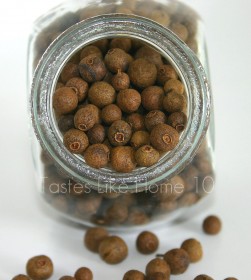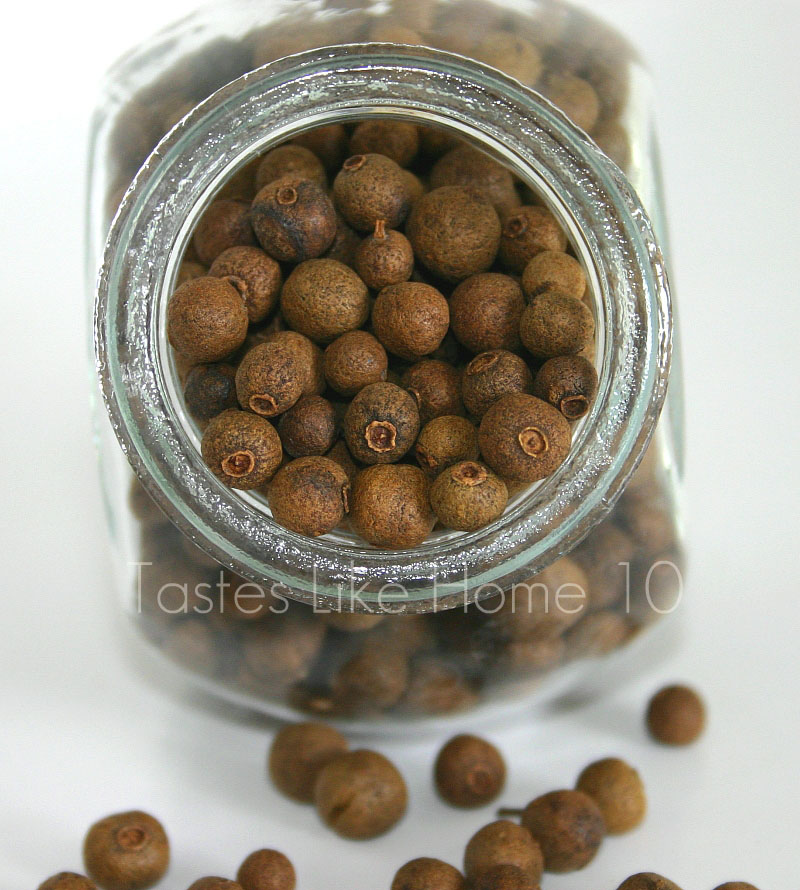Hi Everyone, over a month ago, whilst I was in Guyana, I went in search of allspice because I needed some to put into the apple crostata I was going to make for dessert one evening. I scoured Bourda market looking for allspice. As I went from one stall to the next, they kept offering me cinnamon sticks each time I asked for allspice, and when I would explain what allspice is, I would be met with a blank stare, giving the impression that they did not know what I was speaking about. However, there was one stall where the vendor knew of allspice but alas, she had none. I ended up going to Mattai’s where I was sure that I would get some allspice.
 I was surprised by how many people did not know of allspice because it is usually in most garam masala mixes, it is sold by itself, and, there are lots of spices available in Guyana. Perhaps it is known by another name?
I was surprised by how many people did not know of allspice because it is usually in most garam masala mixes, it is sold by itself, and, there are lots of spices available in Guyana. Perhaps it is known by another name?
Contrary to popular belief, allspice is not a combination of spices that have been ground up, namely cloves, cinnamon and nutmeg.
Allspice, also known as Jamaica pepper, English spice, clove pepper or Myrtle pepper, is the dried unripe berry of the pimento tree, an evergreen tree that is native to Central and South America, Mexico and the West Indies in general. The taste and smell of allspice are what actually led to its name. When you taste allspice you think of cloves, cinnamon, nutmeg, juniper, ginger and pepper. See why it seems natural to be called allspice?
In Jamaica it is popularly referred to as pimento and that is because when the Spaniards first encountered the berries, they thought they were peppercorns and automatically called them pimienta – the Spanish word for pepper. In the times before refrigeration, allspice was used to cure meat. It was ground up into a paste along with a few select ingredients and rubbed on to the meat. This process and flavouring is what would eventually give birth to the famous Jamaican Jerk!
Allspice is used widely in Jamaican cuisine; Jerk, for example, is cooked over

a latticework of pimento wood (wood of the allspice tree) that infuses its flavour into Jerk. The ground allspice berries are essential to the jerk marinade. Jamaica is so rich with allspice that it is a major export from the island. Get some the next time you visit Jamaica.
Jamaica is not the only country that uses allspice in its everyday cuisine. In the Middle East and North Africa, allspice is used alone and in combination with cinnamon to create many dishes, both savoury and sweet. Because of its flavours and gentle heat, allspice works really well in both types of preparations.
Appearance & Availability
Allspice resembles large brown peppercorns – they are round and dry with a shell that’s hard and lightly wrinkled. It is sold and used whole and ground. You should be able to purchase it at most places that sell whole spices.
Uses
Like I said, allspice is used for both savoury and sweet preparations. It is essential to many spices mixes such as Garam Masala, Berbere (an Ethiopian spice blend), Ras-El-Hanout (a Moroccan spice blend) to name a few.
It can be used whole when making stews, pickling, or when boiling or simmering ingredients for preserves or beverages.
Ground up, the uses of allspice are endless. Allspice pairs well with meat and poultry, rice, pumpkin, sweet potatoes, peas and beans. Apples, pears (not avocados), papaya, oranges, sweet dough for breads, buns and biscuits are natural partners for allspice. Jams and jellies are great with the addition of allspice.
So, if you haven’t tried allspice before, I encourage you to do so. Check out any place that sells whole spices and pick up some. Get them whole and get some already ground up. Using allspice whole allows for subtle flavouring, using it ground up will give a more intense flavour but do so judiciously, your aim should always be to enhance not overpower.
If you don’t want to get it ground up, then by all means get the whole berries and grind them yourself with a mortar and pestle, a spice grinder (I use a coffee grinder exclusively for grinding spices), or a trusted lorha and sill (if you can find one! I’ve found that a light toasting elevates the flavour and makes grinding a lot easier.
Enjoy!
Cynthia
[email protected]
www.tasteslikehome.org

